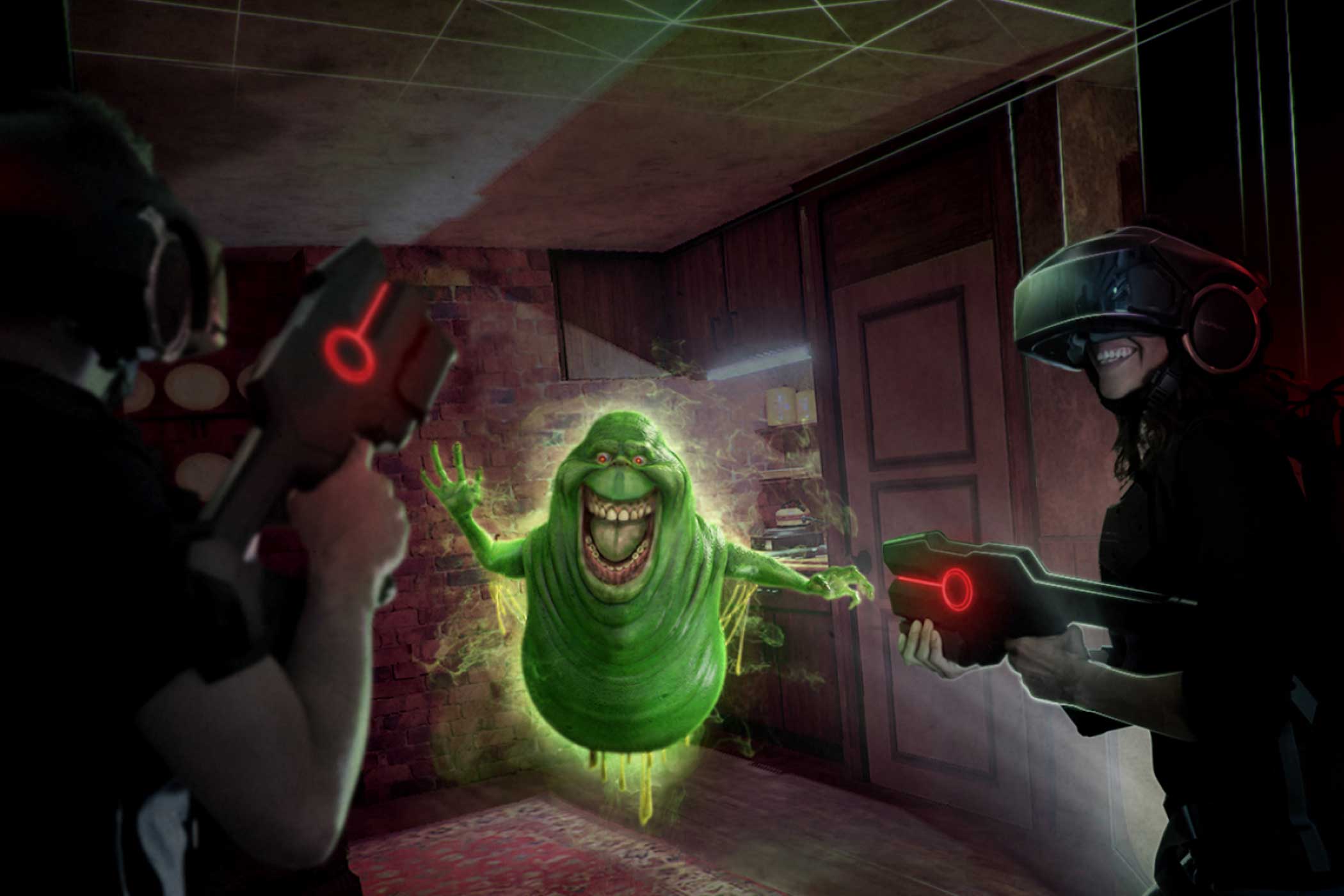
Virtual reality, though impressive, is largely a solitary experience. Strapping into a headset like the Oculus Rift or HTC Vive transports you to a different world — one that others can’t experience without similar headgear. Even then, there are few ways to interact with others inside such worlds, which are often also limited in size.
But with Ghostbusters: Dimension, a virtual reality attraction that opened at Madam Tussaud’s wax museum in New York City this month, I got to team up with a coworker to hunt digital ghosts in a spooky haunted apartment. Utah-based startup The Void, Sony Pictures, and Madame Tussauds collaborated to create an interactive attraction that’s part of an exhibit based on the new Ghostbusters film. The result is a stunning, ultra-realistic experience that proves there is potential in virtual reality beyond home entertainment.
While the multiplayer aspect adds to the fun, it’s far from the most remarkable part of Ghostbusters: Dimension. The game, which carries a $49.75 price of admission that also includes museum access, is fully immersive and completely interactive. Instead of being confined to a chair or a room as with most VR experiences, players are free to wander around the world they see through the headset.
The experience’s virtual universe combines with the real world in a way that truly makes it feel like being teleported into a video game. I explored an entire apartment and even took an elevator ride all while enveloped in a virtual world. As I carefully scaled across a shaky fire escape on the ledge of a building, the floor beneath me began to creak and wobble. When villainous ghosts threw furniture at me, my suit pulsed and vibrated. A gust of wind swept the room after my teammate and I had successfully taken down our final enemy.
That immersion comes by way of several strategies. Ghostbusters requires you to suit up like a Ghostbuster, complete with a helmet, a proton pack, and a gun. But the gear isn’t just a costume. The headset contains a set of virtual reality goggles, which transforms the museum into a New York City apartment brimming with ghosts. The vest houses all of the computing components and cables necessary to power the headset, in addition to sensors that buzz to help players sense what’s occurring in the game. The physical stage, decked out with special effects, is mapped to the headset, meaning that interacting with objects in the real world has consequences in the digital one. Opening a door in the game, for example, requires players to actually do so in real life.
The Void specializes in creating these “hyper-reality” experiences that layer VR over interactive real-world environments. The company’s Utah facility includes similar simulations, ranging from a sci-fi shooter to a Mayan tomb exploration, but it’s not yet open to the public.
Ghostbusters’ launch comes as virtual reality is beginning to go mainstream. That’s mostly thanks to the launch of two consumer headsets meant for home use, the aforementioned Rift and Vive. Both products mark a turning point for VR, a technology that has long existed but only in crude and unwieldily forms. Still, these devices are expensive, they require high-end computers, and they don’t offer great multiplayer experiences yet. With Ghostbusters: Dimension, The Void has managed to address all of those concerns, while also making VR accessible to those who don’t want to spend hundreds of dollars on a high-end headset of their own.
More Must-Reads From TIME
- The 100 Most Influential People of 2024
- The Revolution of Yulia Navalnaya
- 6 Compliments That Land Every Time
- What's the Deal With the Bitcoin Halving?
- If You're Dating Right Now , You're Brave: Column
- The AI That Could Heal a Divided Internet
- Fallout Is a Brilliant Model for the Future of Video Game Adaptations
- Want Weekly Recs on What to Watch, Read, and More? Sign Up for Worth Your Time
Contact us at letters@time.com